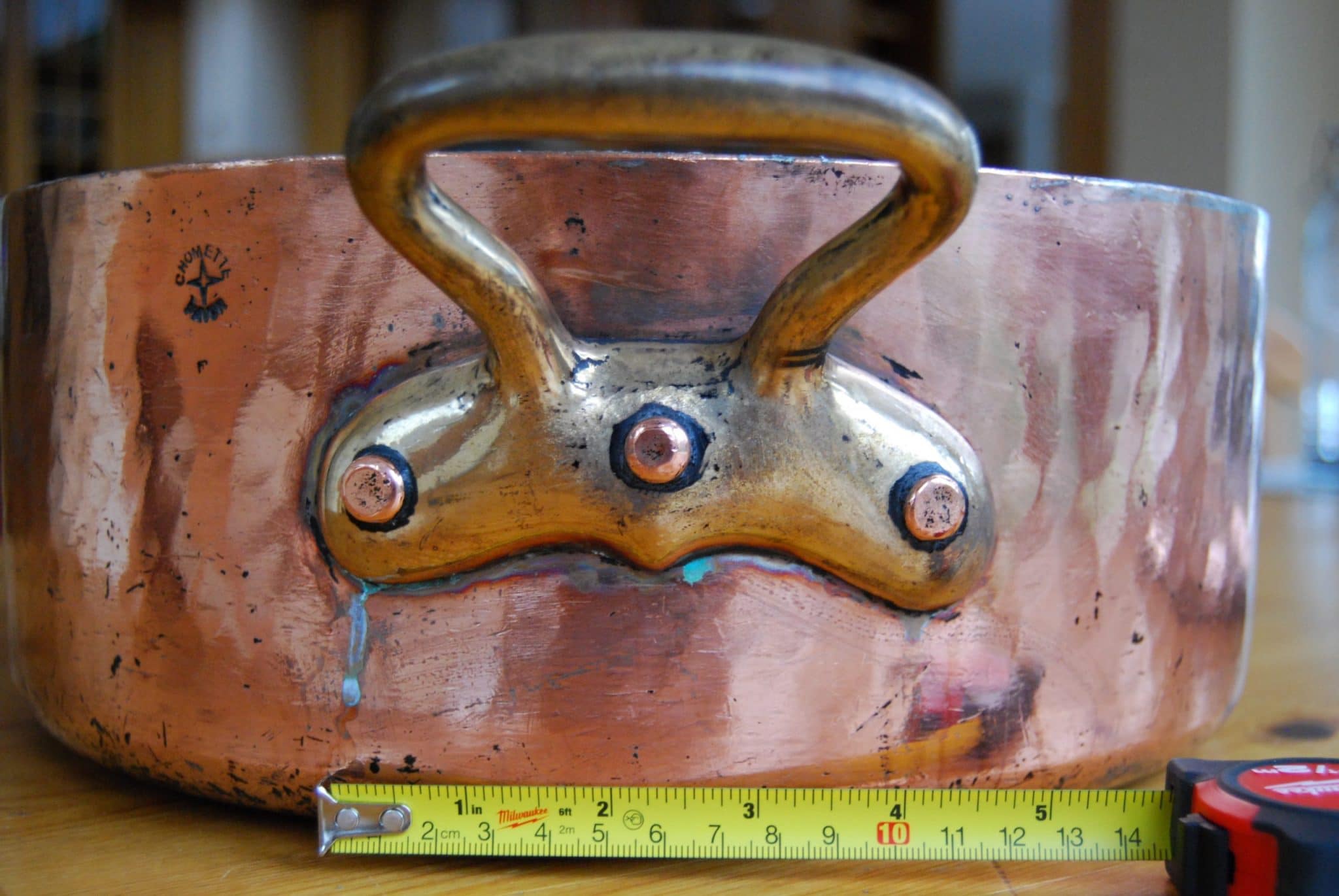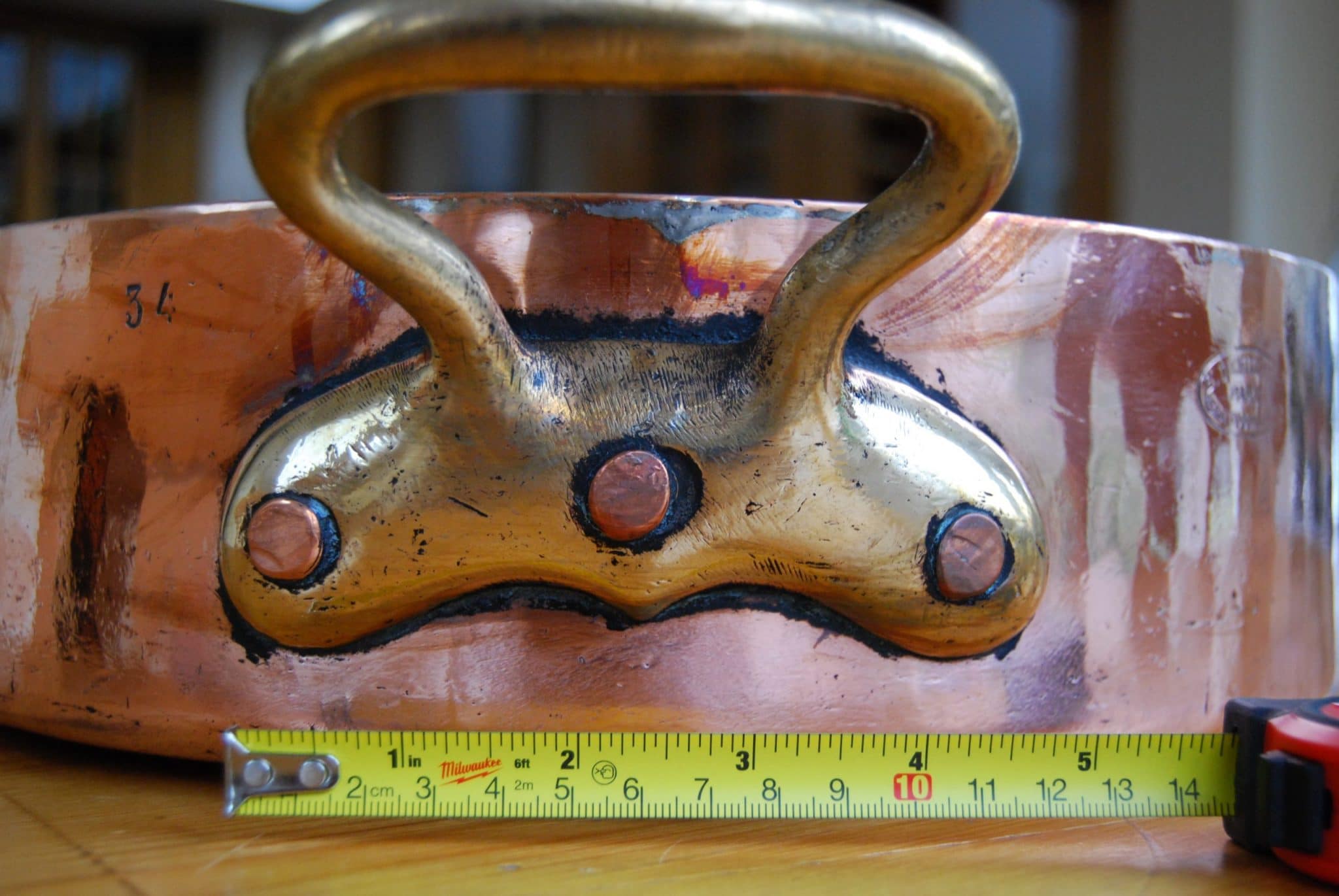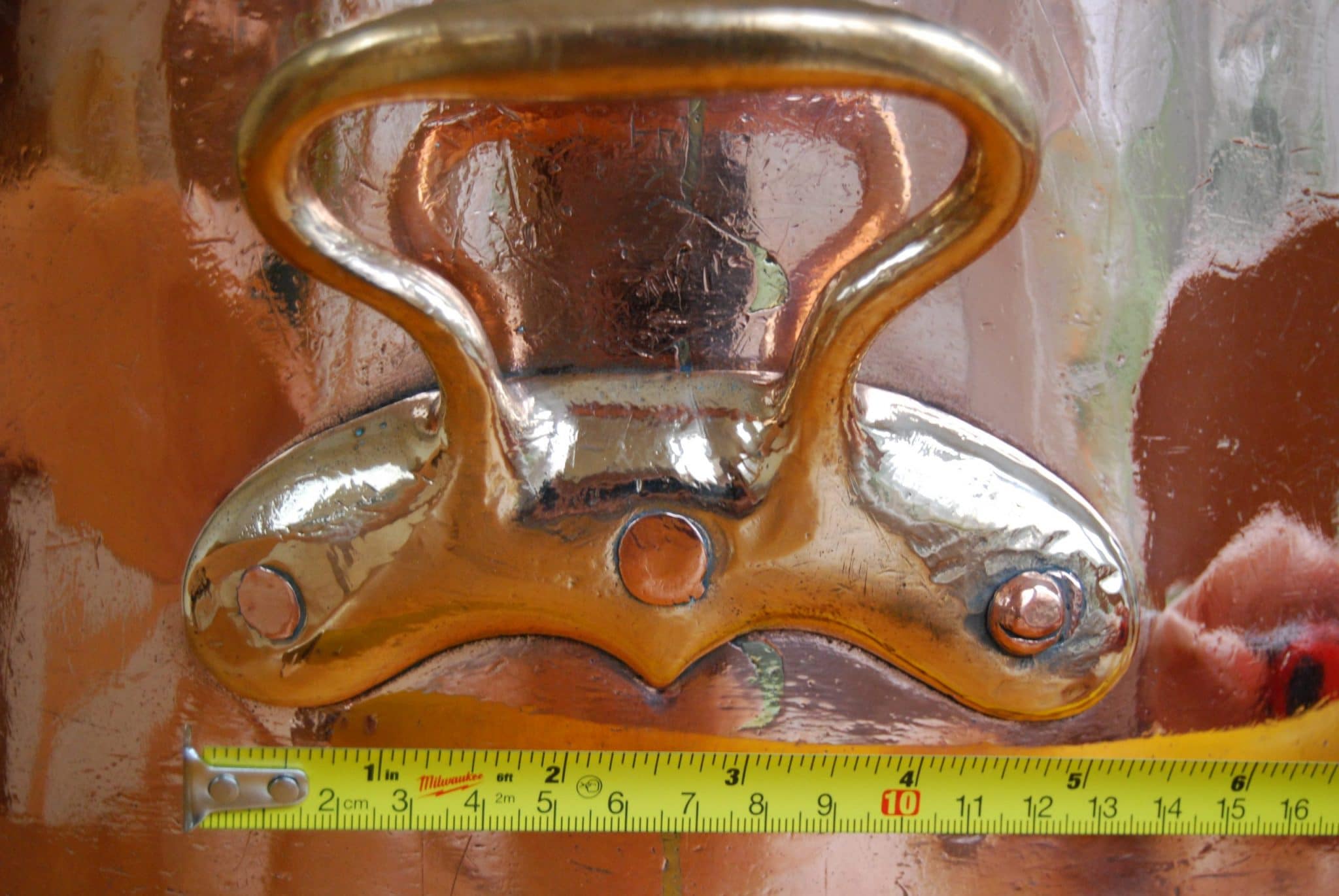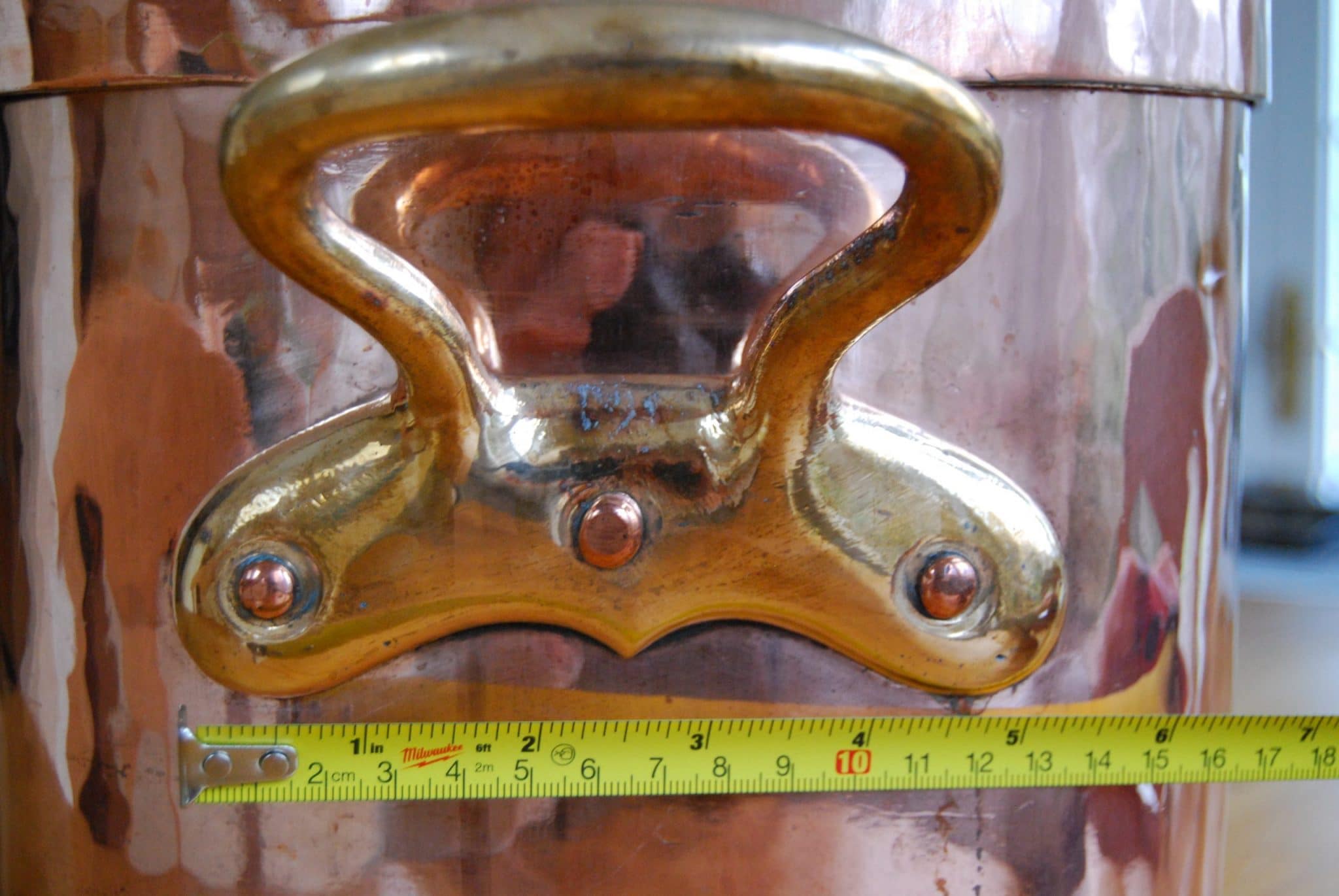This is a lovely stewpot in an uncommon size, and though it’s unmarked, I think it’s Dehillerin and I’ll show you why.

-
- Type: Tin-lined stewpot in hammered finish with brass handles fitted with three copper rivets
- French description: Faitout étamé et martelé avec poignées en laiton muni de trois rivets en cuivre
- Dimensions: 30cm diameter by 16cm tall (11.8 inches by 6.3 inches)
- Thickness: 3.0 to 3.1mm at rim
- Weight: 7000g (15.4 lbs)
- Stampings: “W”; “30”
- Maker and age estimate: Likely Dehillerin; 1900-1920?
- Source: eBay (US)
This is stewpot is 30 centimeters (11.8 inches) in diameter, which is an in-between size. Most stewpots and stockpots I’ve seen come in 28cm and 32cm but relatively few seem to be 30cm. I have a theory that this is because the 30cm size was “lost” when coppersmiths began using machine tools to cut dies for the bases of pots; perhaps there was no demand for 30cm that could not be met by a 28 or 32cm piece. In any event, I have not seen many 30cm stewpots like this, so when this came up on eBay for a good price, I jumped on it.
I sent it to Erik Undiks at Rocky Mountain Retinning for restoration and he did a lovely job with it. Below are some before and after shots for comparison. The pot was in pretty good shape to begin with, in my opinion, but it really needed new tin. Erik is a master at retinning and the interior just gleams.






This pot does not carry a maker’s mark, just the initial W and the number 30 (representing its diameter in centimeters). I have been trying to learn how to identify unmarked pots like this based on dovetails, handles, and rivets, and I’m going to try to made some educated guesses about this pot.
Dovetails
If this pot has dovetails, I can’t find them. Either this pot was soldered so minutely that I can’t find a single seam, or it was deep drawn from a flat sheet of copper. I suspect the latter, which sets this pot’s age to the 1880s or later. I am just starting to look into the history of the deep draw process, but at the moment I believe the first machines were patented in the 1880s, and would have migrated into the copperware business as soon as it was economically advantageous for the makers. In any event, the lack of dovetails points to the end of the 19th century and later.
Handles
This pot has brass handles with wrinkles, artifacts of buffing and polishing after they were cast. Prior to the invention of mechanized polishing machines, this would have been done by hand with a file or rasp. When I see rough score marks like this, I think this is a 19th century indicator.
The other thing to look at is the shape of the handle. On the left is the handle of this unknown pot, and the other photos are other pans of mine with handles that look similar.



Those two handles above are fairly good matches to my eye, but the little point on the underside of the baseplate looks sharper in this pot than in the other two above. I have two more pots with similar points, though the shape of the baseplate is a little different. Take a look.



Based on the handle similarities to known pots, I’m fairly comfortable saying this pot is late 19th century, and possibly Dehillerin.
Rivets
Lastly, I believe these are handmade and hand-hammered rivets. The interior rivets are flush to the walls of the pan, which inclines me to believe the rivets were custom-shaped rather than mass-produced. The exterior rivets are smooth buttons, which is unusual, but there are signs of hammer strikes as well. The rivet on the right in the photo below is slightly faceted, even though the facets themselves are smooth and polished.

These rivet characteristics point to mid-19th century technology at the earliest. Rivet making machines were first invented in the mid-19th century, and riveting machines a few decades later, but these technologies did not make their way into the French chaudronneries until the 20th century.
Conclusion
Here’s my analysis.
- Dovetails: No dovetails points to late 19th and into the 20th century
- Handles: Strong similarity to known stamped Dehillerin pieces from late 19th century
- Rivets: Flat interior finish and hammer strikes on exterior heads points to hand-make and hand-assembly in the late 19th to early 20th century
Based on this, I think this is a late 19th century to early 20th century Dehillerin piece, unstamped for whatever reason.
I’m happy to have this pot in my collection. The 30cm size is nice to have, but the challenge for off-sized pots like this is finding a lid for it. Let me know if you see one for sale.





